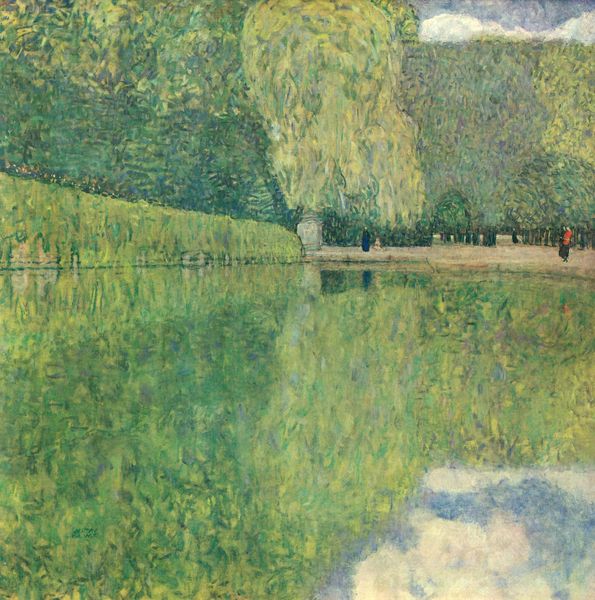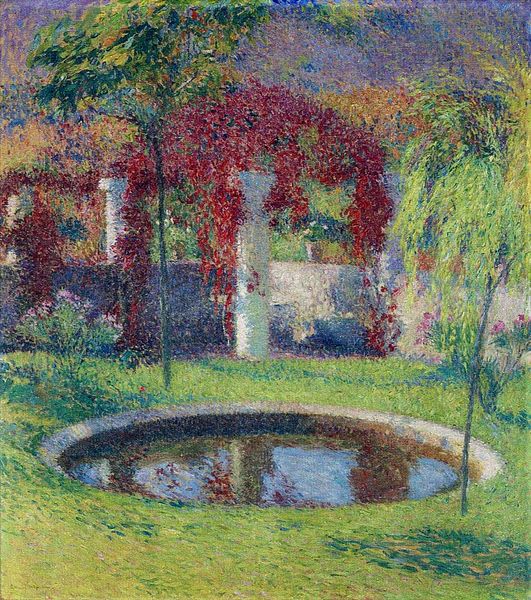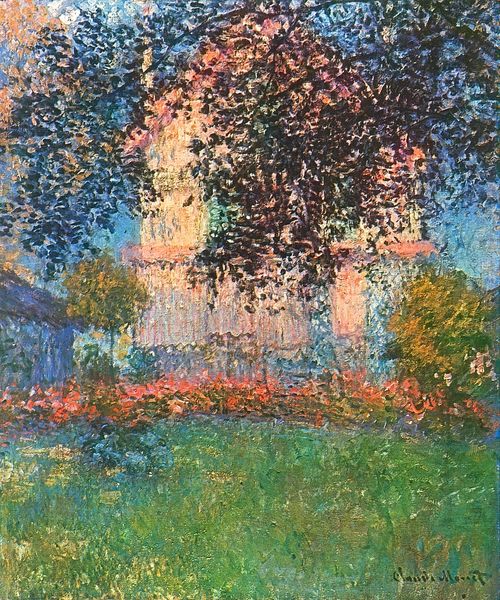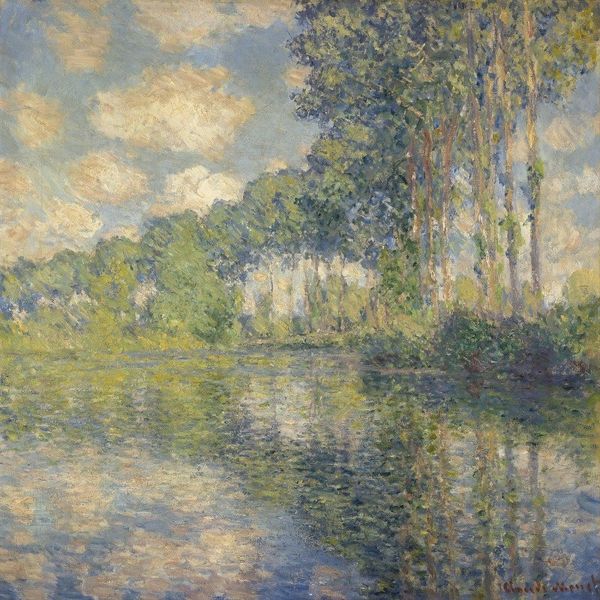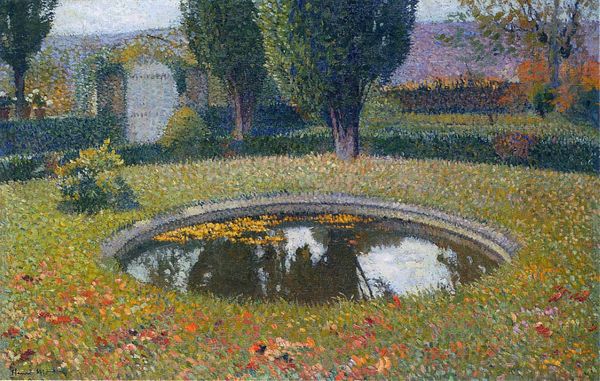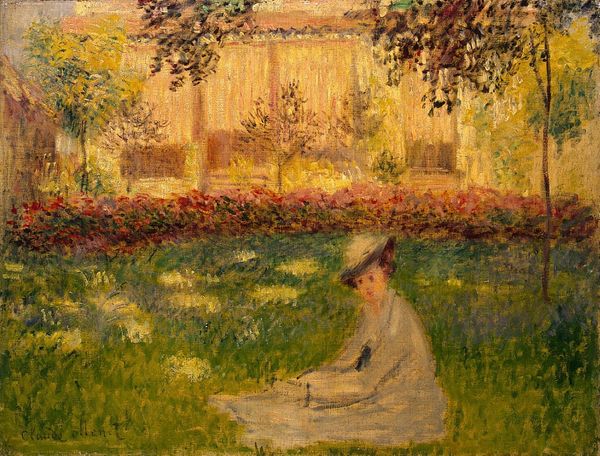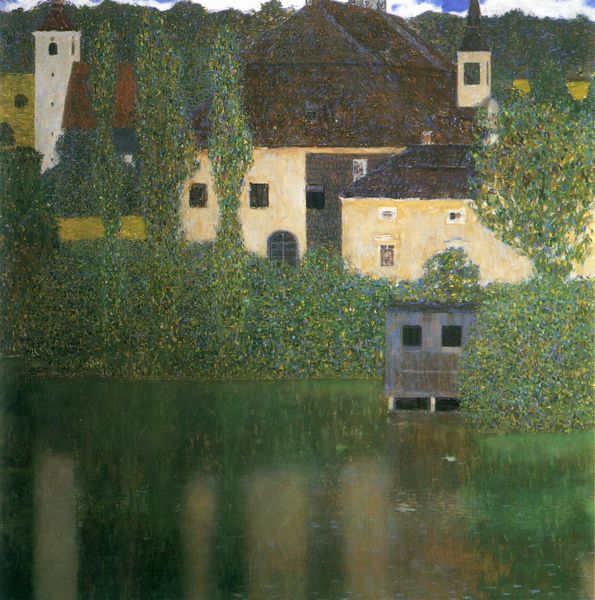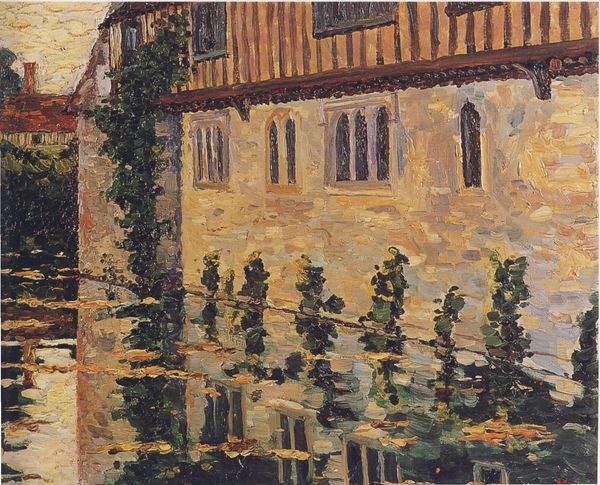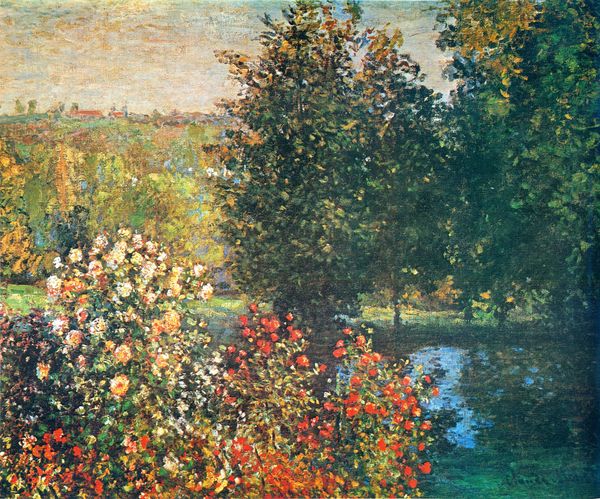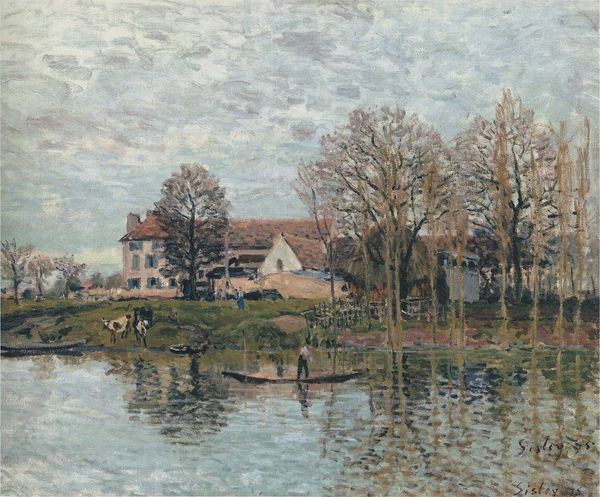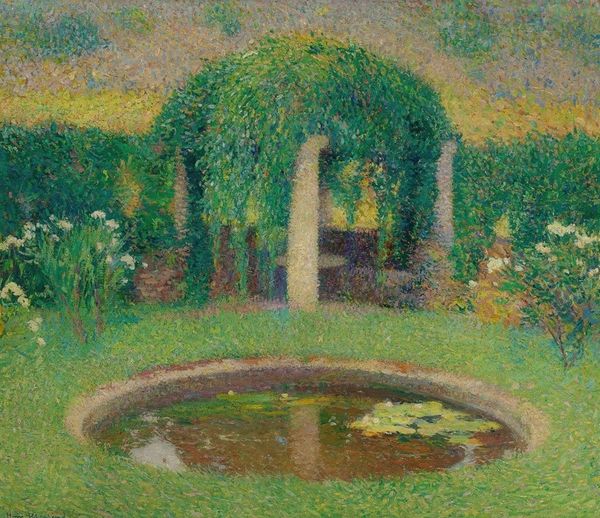
Dimensions: 110 x 110 cm
Copyright: Public domain
Curator: Looking at Klimt's "Schloss Kammer on the Attersee IV," created around 1910 using oil paints, the first thing that strikes me is the uncanny stillness. The reflected world in the lake seems as present, as tangible, as the real one above. Editor: Absolutely. Let’s consider this in light of Viennese society at the time. Klimt, along with other artists in the Vienna Secession, was reacting against academic artistic traditions, engaging with more direct and honest means of expression. Consider the availability of pre-mixed oil paints in tubes, or the development of brighter synthetic pigments. These innovations significantly impacted painting, aiding in plein-air work. Curator: A key motif for Klimt here, as with much of his oeuvre, is mirroring. It reflects a psychological doubling, or perhaps an introspective quality of self-regard. What do you read in these shimmering repetitions, given his use of oil and possible open-air approach? Editor: It signifies a turn away from narrative and towards a subjective, sensual encounter with landscape. The very act of painting en plein air suggests an immediacy, capturing light and atmosphere on canvas in a way studio-bound painters could not. Think about how industrialization had impacted life at this point; the drive for mass-produced materials pushed artistic practices towards a space where skill and individuality mattered again, through the means used to make art. Curator: I’m also drawn to how the geometric forms of the house play against the organic shapes of the trees and floral landscape; it's a tension. In the painting I see symbolic links between architecture, reflecting structure and status, in relationship to water reflecting a constant state of flux. Editor: That’s very insightful, noting the flux; to me, this implies something deeper regarding our own internal drives. This scene's enduring appeal lies in the masterful handling of materials, but equally rests in this potent combination of place, method and perspective of early 20th-century Austria. Curator: I concur. Examining "Schloss Kammer on the Attersee IV" has allowed us to navigate his inner visions and external circumstances to deepen our encounter with the canvas. Editor: Indeed. The social conditions, along with an increasing attention on processes rather than solely traditional symbols, greatly inform how Klimt interprets the imagery on the water.
Comments
No comments
Be the first to comment and join the conversation on the ultimate creative platform.
